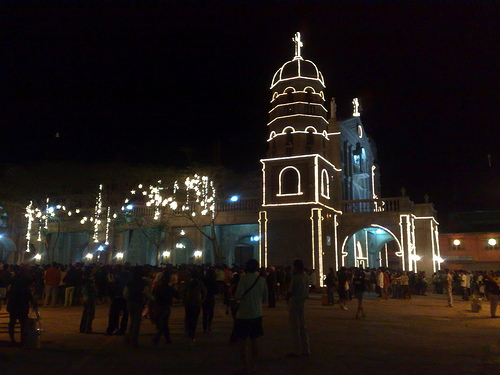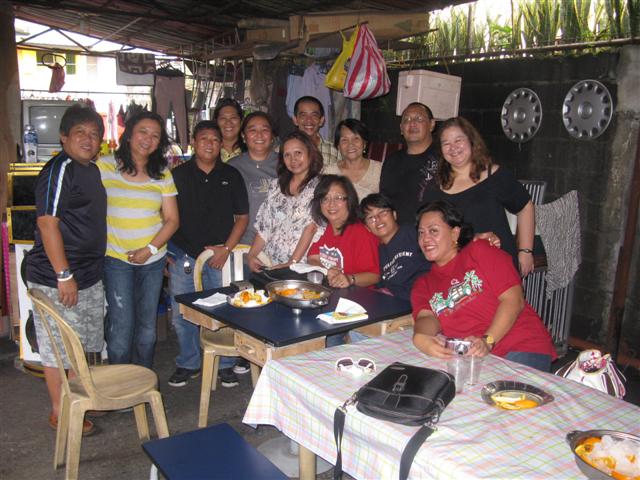Bangkok Tourism 101
DAVAO City — Lately I visited Bangkok, the “City of Life”. It looks like Manila where the old and new cultures collide but with a different touch and ambiance of exotic Asia where Westerners are lured to discover. It is indeed a city busting with life because it is the center of trade and commerce and a prime tourist destination in Asia. Despite of the heated political climate obtaining in Thailand lately, where a regime is replaced by another through both violent and non-violent uprising just like our EDSA revolt,Bangkok is still a magnet for tourists.
I think Davao and Cagayan de Oro can learn much from Bangkok because unlike Manila and Cebu, they have immense potential for tourism, infrastructure and industrial development. I do not claim to be an expert in urban development. But I am a keen observer of things, people and situation so that I can share my observations to others who have the “K” and power to accomplish things. The people from the University of the Philippines, Asian Institute of Management and Development Academy of the Philippines, etc., must have such collective expertise to turn around our sleepy economy into a robust one if they can just learn to work together as a team. Of course they cannot move without the political will of the government to keep this team going.
I arrived at Bangkok Suvarnabhumi International Airport on an evening flight from Manila in August 22. I had to attend a week-long regional workshop on engaging the UN Human Rights Council and the Universal Periodic Review at Intercontinental Hotel Bangkok sponsored by Save the Children Sweden. I would not delve much about the workshop but on what I observe there that makes the city a prime tourism destination in Asian region. Here are some of the features of Bangkok that are interesting:

First is the airport. They say that first impression lasts. Air and sea ports are the first “line of sight” of any visitor. As a rule of thumb, they must be impressive to attract visitors to discover what lies behind the gold linings of the ports. Bangkok Airport may not be grand as the Hong Kong International or the Paris International which I also visited some years ago but definitely it’s one of the best in Asia. Our NAIA pales in comparison with Suvarnabhumi in terms of its overall design and amenities. Our Davao International Airport looks like a tiny wing of its multi-layered and multi-faceted airport. One can literally waste his time in the mess of boutiques and stores selling souvenirs and duty-free gift items. The airport also offers luxury restaurants, gyms, games area, internet stalls, clinics, chapels and prayer rooms.

The second point of interest is the efficient railway system. Bangkok airport is connected to the center of the city by two railway airport links aside from the usual public taxi and airport limousine which are appropriate for those with big luggage but are quite expensive. The traffic condition of Bangkok is terrible, to say the least, so travel organizers prefer the railway system for traffic-sensitive and budget conscious visitors. One railway is the non-stop Airport Express from the airport to Makkasan station in the East and the City Line which is heading to the Phayathai station to the West. It took me about 40 minutes to reach Phayathai for a fare of 40 Baht (around Php 60). From these stations you can transfer to the elevated Sky Train, also called the BTS to skirt the heavy traffic below and to proceed to any places in the city at no time at all. Our traffic congestion in Manila, Cebu and eventually Davao will surely ease with such an efficient railway system.
The third point of interest is the lodging and function amenities like hotels and convention halls. Visitors come because they want ease, peace and fun. I was booked at Room 411 of Holiday Inn Bangkok which is just a stone throw away from the ravaging BTS railway but I could not hear any roar and thunder as it passed by. The place was cozy yet homely, a great place to rest from all the day’s work and worry. Our workshop venue was at the Presidential I and II suites of the adjacent Intercontinental Hotel. If you take pride of Marco Polo and Insular Waterfront as the best that Davao can give, you might change your mind if you would see the Intercontinental at973 Ploenchit Road and other plush hotels in their category in Bangkok.
The fourth is people and places of interest. For those who are more culturally-inclined, they can visit many religious and cultural sites where distinct Thai arts are displayed and dances and songs performed. No wonder Bangkok is also called the “City of Temples” because of its numerous Buddhist shrines and images found even in the city’s busiest streets. There is one fronting the street from the Intercontinental complete with priests and dancers in ethnic costumes doing their thing almost 7/24. If you are lucky you can get a glimpse of the royal life of the revered King and Queen of Thailand doing their ceremonial functions in one of the state’s offices in Bangkok. Those who love outdoors can try the Koh Samui’s crystal waters of the Amari Palm Reef and other resorts to have a good tan. Shopping complexes selling hi-end i-Pods, 4G cell phones to second hand “ukay-ukay” are everywhere. Just make it sure you get the “best” of those fake gadgets for your money and not get skin rashes from those fancy clothes sold in the “bangketa”.

The fifth is food. If I am right, Buddhism, the prominent religion of Thailand like Christianity, has no food restrictions. Authentic Thai restaurants like the Kum Poon and dumpling king Din Tai Fung located at the 7th floor of the Central World Plaza have a small stove and wok or pot on each table where customers can fry and boil their dishes as they wish. Thai food is usually spicy but visitors can always have a choice of their usual fare of burgers, spaghetti, salad and long array of Chinese dishes. For curiosity, I tried a pack of two sticks of ball-shaped street-made “longanisa” for 20 Baht near the Siam Train station. And lo and behold, it tastes exactly like the ‘longanisa” of the barbecue shanties at Magallanes and Claveria streets of Davao. The only exception is that the pack of Bangkok “longanisa” is not complete without shreds of cabbage and 10 pairs of raw “siling labuyo” which you ought to eat with your meal. What a hot experience indeed. Chow!
(This article first appeared on September 02, 2011 was published 2 at Mindanao Gold Star Daily (www.goldstardailynews.com) Emmanuel Roldan’s column Davao’s Peak . The author can be reached via email at: emmanuel.roldan@gmail.com)
About Emmanuel Roldan:
 Emi is my kababayan from Padada, Davao del Sur. We went to the same high school and were altar boys and choir members in our parish church. Today, is a news editor/columnist of the Mindanao Gold Star Daily – a member of the Sunstar Group. Aside from being a journalist, he is also a development worker and a human rights advocate having served in various organizations engaged in human rights protection and development work. At work and at play, Emi was able to nurture his childhood love for music. He still plays mean tunes on his guitar and sings very well.
Emi is my kababayan from Padada, Davao del Sur. We went to the same high school and were altar boys and choir members in our parish church. Today, is a news editor/columnist of the Mindanao Gold Star Daily – a member of the Sunstar Group. Aside from being a journalist, he is also a development worker and a human rights advocate having served in various organizations engaged in human rights protection and development work. At work and at play, Emi was able to nurture his childhood love for music. He still plays mean tunes on his guitar and sings very well.





942 comments
I also like this write-up. While reading, I seemed to be transported to Bangkok.